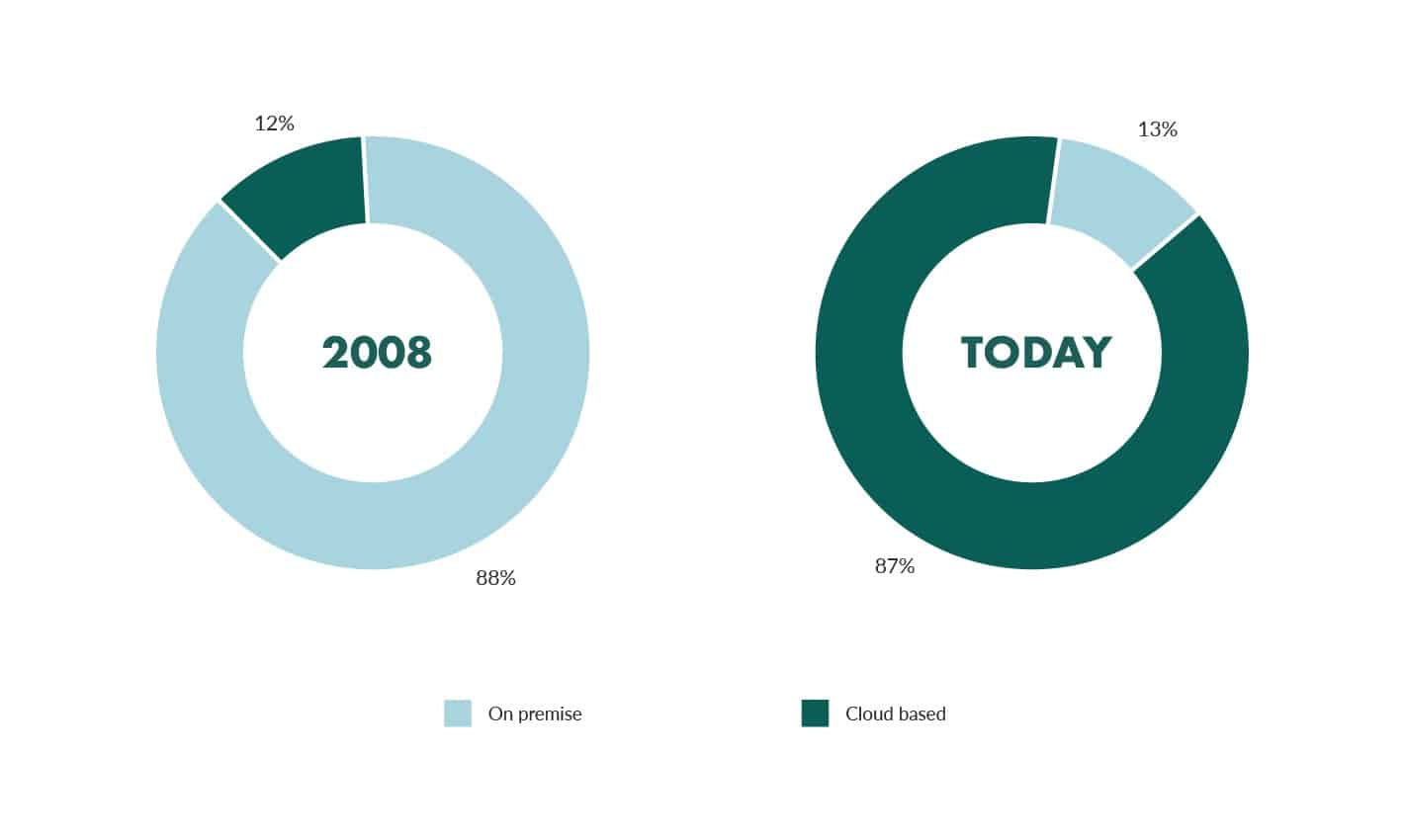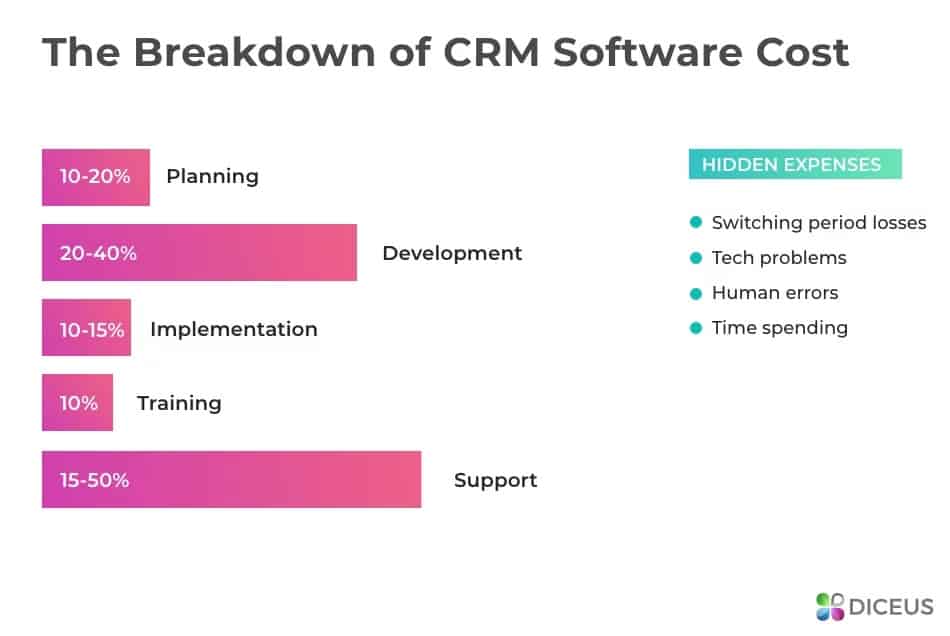Customer Relationship Management (CRM) software has skyrocketed in popularity within just a short decade. From prohibitively expensive for many and limited in scope, it has consistently become both more affordable and more expansive. Today, CRM is a digital marketing mainstay and an invaluable asset for businesses small and large alike. Still, perhaps in part because of this rapid evolution, businesses now also face seemingly more issues than before, spanning across user adoption rates, implementation, scope management, and more. To explore this issue in some depth, let us dedicate this article to persistent, common CRM problems and their solutions.

The boom of CRM software

Should you need a deeper introduction to CRM as a software type, our aforelinked article should serve this purpose well. Here, for context and text economy, let us only briefly touch on CRM’s rapid expansion.
For one, CRM has experienced unprecedented growth within the past decade. Statista finds it is the single largest software market today – certainly a notable feat. Moreover, the worldwide CRM market revenue has almost doubled from 2015 to 2019. While its expansion rate is projected to slow down, it is still on an upward trajectory for the foreseeable future.
In turn, reflecting this boom, SuperOffice reports that “91% of companies with more than 11 employees now use CRM software”.
This has paved the way for ample solutions to find their way into business workflows, from general-use juggernauts like SalesForce to industry-focused specialists like MoversTech CRM.
However, no business software is without challenges, and CRM is no exception. Perhaps in part because of – and certainly closely following – this expansion, its inherent challenges became more notorious.
Common CRM problems and their solutions
To illustrate this, let us delve into the 5 most substantive, common CRM problems and their solutions to consider. In no particular order, our picks are the following.
#1 User adoption
Perhaps the most infamous CRM issue for most businesses lies in plain user adoption rates. Nomalys notes this challenge, as does research by IBM and such CRM vendors like the aforementioned SalesForce. Exact figures will slightly vary, but most such research quantifies adoption rates as a rather abysmal 24-26%. Combined with most CRM project failures stemming from human error, few challenges warrant more attention than this one.
Solution
Unfortunately, there is no universal, clear-cut solution for this. The root of this challenge will differ among businesses, and many will require top-down interventions to tackle. However, you may combine proactive and reactive measures to approach it:
- Establish a clear plan. Present your staff with a crystal-clear CRM implementation plan. Explain which issues it will address, how it will benefit your business, and how it will augment its goals.
- Consistently train your staff. Many employees may struggle to use CRM; 43% of all users still leverage less than half of their solution’s features. Ensure you provide consistent training to help them overcome reservations and understand your CRM’s capabilities.
- Demonstrate CRM’s value. Nothing encourages adoption quite like tangible results. Post-implementation, present your staff with your project’s returns to help them embrace it and its merits.
To highlight the need for training specifically, consider the following video by BAASS. It highlights our claim above that multiple underperformance issues stem from user error, which will ultimately discourage adoption altogether.
#2 Securing data

Second among common CRM problems comes data security. Such concerns are very justified, as the pandemic seems to have accelerated cyberattacks of all kinds.
For a notable CRM-specific example, we may cite USCellular’s CRM data breach from last year. BleepingComputer reports that human error allowed the attack to take place, as “employees were scammed into downloading software onto a computer”. Then, USCellular’s notification adds that “[an] employee was already logged into the [CRM] system”, which “allowed the unauthorized individual to remotely access the store computer and enter the CRM system under the employee’s credentials”.
Such attacks can understandably cause severe harm to any business and tarnish their customers’ trust.
Solution
This challenge, too, depends on an array of factors, so it requires such holistic approaches as:
- Training your staff on cybersecurity. CRM training aside, your staff should remain vigilant and informed as regards cybersecurity. Even the safest solutions may not protect your data from plain human error.
- Carefully gauging the security measures of your vendor. Still, should you opt for cloud-based solutions, you may scrutinize your vendor’s security measures. Few perks justify higher price tags like more security does.
- Considering on-premise CRM solutions. Finally, you may opt for on-premise solutions instead – leaving data safety in your own hands. However, consider if such solutions make sense for your business – and remember that cloud-based ones often offer comparable security.
Notably, as regards the latter, increasingly more businesses opt for cloud-based solutions over on-premise ones. SuperOffice finds the ratios of each have flipped entirely from what they were in 2008.
#3 Integrations
The third mainstay among common CRM problems, somewhat adjacent to adoption rates, comes with integrations. Each business’s workflow relies on multiple solutions, and CRM explicitly seeks to occupy a central place within it. Thus, CRM integrations with existing solutions are of paramount significance.
For workflows, they will minimize disruptions and serve CRM’s purpose more efficiently. For users, it will help prevent frustrations and further encourage adoption. On the whole, they will help future-proof your operations and help avoid overextensions to multiple new, often costly solutions.
Solution
For this challenge, too, solutions are quite business-specific. They will rely on thorough research so as to ensure your candidates offer exactly the ones you need. To do so, you may:
- Map out your existing assets. First, you may identify every crucial solution within your workflow. Should alternatives exist, you may consider them – homegrown solutions rarely integrate well with any such large-scale systems.
- Consider future needs. As you do, you may try to predict future needs. For example, if you intend to focus on a new marketing front like social media, you may consider relevant integrations in advance.
- Carefully research your candidates. Finally, examine your candidates with utmost care. Simply making the correct choice for your business can help prevent a wealth of issues across the board.
Should you need help with the vital step of choosing a solution, itGenius’s following video explores it in depth.
#4 Scope creep

On the subject of future-proofing, scope creep in itself is among the most common CRM problems. As with other business projects, scope creep often occurs when one’s scope expands in response to new circumstances. It also occurs due to expanding ambitions, of course, and loose planning facilitates it. In the context of CRM specifically, scope creep occurs post-adoption, when businesses seek to move past its initial functionalities.
Scope creep can substantially hinder projects of all kinds, as G2’s following illustration highlights.
Solution
Much like the above, preventing scope creep is a deeply personal endeavor. That is to say, each case of it may have different underlying reasons each business must tackle in advance. You may consider such proactive measures as:
- Starting with a robust plan. Loose planning is a primary reason for scope creeps, as departments and managers may steer off-course. Set SMART goals in advance, establish which workflow shortcomings CRM will address, and revisit them regularly.
- Choosing future-proof solutions. Still, new circumstances may require improvisation and call for new solutions. As much as possible, try to predict such expansions and choose your solutions with this factor in mind as well.
- Reining in scope creeps as they occur. Finally, remain diligent over time; should you spot such cases early, you may rein them in and prevent adverse effects.
#5 Handling costs

Finally, among the most common CRM problems lies handling its costs. Each solution comes with its own costs beyond the initial purchase or recurring payments, as Diceus notes above.
Especially for smaller businesses, such budgeting concerns are definitely justifiable. Both hidden and unforeseen expenses can significantly hamper one’s budget, and have ripple effects on other operations.
Solution
Handling CRM costs largely hinges on thorough prior research and feature prioritization. Specifically, you may:
- Evaluate each candidate’s features. In contrast to scope creep, many businesses often don’t use CRM features they pay for – as highlighted above. Examine all features each of your candidates offers, how they affect the final price tag, and whether you will truly need them all.
- Examine each vendor’s support. Support costs are among the most overlooked expenses businesses should keep in mind. Gauge the quality of your vendor’s support services alongside their price tag to keep your expenses reasonable and in check.
- Consider cloud-based solutions. Finally, you may consider cloud-based solutions; Capgemini’s findings suggest that cloud-based solutions can cost up to 79% less long-term. Of course, you should still consider on-premise ones if they make sense for your business.
Conclusion
In closing, the above are our five picks for the most substantive, common CRM problems and their solutions. User adoption, data security, integrations, costs, and scope creep all present notable challenges for CRM users old and new. To an extent, all 5 hinge on robust planning, careful research, and diligence before and after implementation. While exact solutions will vary across cases and businesses, the measures and practices above should offer some universal value.

Leave a Reply